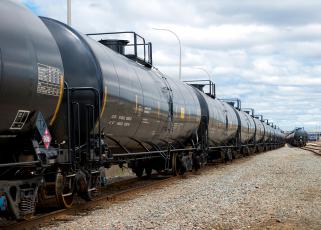*The original podcast transcribed below can be found here. Alongside the publication of AFPM’s new study, “The Fuel & Petrochemical Supply Chains: Moving the Fuels & Products That Power Progress,” Flash Point interviewed leaders working on U.S. midstream infrastructure issues. Today, we’re going to hear from Peter Lidiak, vice president of the International Liquid Terminals Association as part of our series highlighting the U.S. fuel and petrochemical supply chains. The International Liquid Terminals Association is a resource for the liquid terminal industry. Association members store products for chemical manufacturers, food growers and producers, product manufacturers, utilities, government agencies and the military. AFPM: When we talk of infrastructure, people think highways, waterways, et cetera, but rarely storage tanks. How much storage tank infrastructure is there in the U.S. and what role does it play? Peter Lidiak: Well, there are thousands of liquid storage terminals, and for petroleum commodities alone, the number is right around 4400 [terminals]. They store everything from crude oil to refined petroleum products, to chemicals to alcohols, fertilizers, animal fats, vegetable oils and molasses. So, you can see a great diversity in the products stored. There are about 1.7 billion barrels of petroleum storage available in this country right now, and current utilization hovers around 86 percent or so for things like crude oil and gasoline. AFPM: So, in our report, we highlight storage terminals in the Northeast United States, but that’s just one example. Where are storage tanks typically located, and do we have enough storage to meet demand? Lidiak: Storage terminals are all over the place. And frankly, there are basically two places in the supply chain where terminals operate. You have production in the fields for both precursors to chemicals, and for precursors to fuels which go to terminals that will then store those raw products. That’s where crude oil and some of the products that chemical manufacturers use will go. Then they will move from those terminals to either a refinery or a chemical manufacturing plant, be made into a product, and then usually be moved out to storage terminals again for distribution in local areas. Those distribution terminals are anywhere the wholesalers and retail markets are, so they really are all over the country. AFPM: For all energy infrastructure, there are regulatory requirements and permits required to build. What do you see as the key regulatory and policy issues for storage terminals? Lidiak: For our members, many of our terminals operate in the marine environment. They have marine transportation – from barges and tankers that come into them. Our U.S. ports are aging, and they are in need of some attention to ensure that the facilities are able to receive the vessels, which includes keeping the channel depth and width adequate to handle some of the larger ships. And so, we look to legislation like the Water Resources Development Act (WRDA) to provide funding, and Congress is working on a new version of WRDA right now. Then Congress also has to authorize full funding for those port maintenance activities. It is incumbent on Congress to get the funds into the hands of the agencies like the Army Corp of Engineers to make sure that our ports are in good shape. AFPM: The AFPM fuel and petrochemical supply chains report highlights the nexus between different transportation infrastructure. Can you discuss the role storage terminals play in the integrated fuel and petrochemical supply chains? Lidiak: The terminals fit into the entire length of the supply chain. Production goes to storage and then those products go to manufacturing. They then go back to storage and out to the wholesale and retail level. So, terminals are hubs for all modes of bulk liquid transportation, including pipelines, rail, truck and marine.


